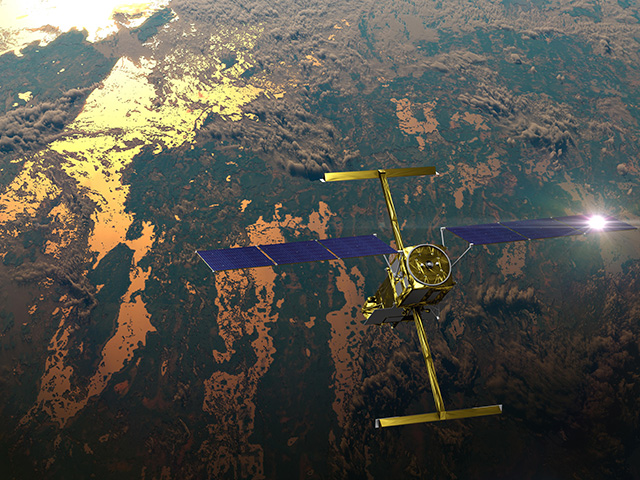A NASA camera observing the sunlit side of Earth from a million miles away is providing new data on daily changes to our planet.
The Earth Polychromatic Imaging Camera (EPIC) instrument operates onboard the National Oceanic and Atmospheric Administration’s (NOAA) Deep Space Climate Observatory (DSCOVR) satellite, which launched in February 2015 and observes Earth from a distance of about one million miles toward the Sun, allowing for observation of the entire Earth from sunrise to sunset.
A spectroradiometer, EPIC acquires images using 10 filters that detect light covering a wavelength region from the ultraviolet to the near-infrared. NASA has made publicly available daily color images that the instrument has been capturing of the sunlit Earth since June of 2015, and now following suit are a collection of science products: sulfur dioxide from volcanic eruptions, total column ozone, ultraviolet (UV) aerosols, cloud and vegetation properties and atmospheric correction including surface reflectance. Those data are available from June 2015 to about two days before the current date.
NASA’s existing fleet of Earth-orbiting satellites provides observations of those and other quantities, enabling scientific research on how the planet is changing. The newly available EPIC products will complement those observations because of the instrument’s ability to capture more images of the entire planet during daylight than any instrument on NASA’s other satellites. In the summer, EPIC captures on average one image every hour and one image every two hours during winter.
“Given EPIC’s special vantage point and frequent observations, we are able to observe the daytime portion of the daily cycle of many phenomena,” said NASA’s Alexander Marshak, deputy project scientist for the DSCOVR mission at NASA's Goddard Space Flight Center in Greenbelt, Maryland. “For example, EPIC can follow a volcanic eruption or a fire plume during the entire day. These measurements complement those taken by other low Earth-orbiting satellites, which view a particular location less often, in many cases only once or twice per day.”
The UV aerosol product tracks phenomena such as plumes from wildfires as they travel hundreds and sometimes thousands of miles and impact everything from air quality to precipitation. Likewise, the sulfur dioxide product tracks volcanic emissions, which can affect air quality and air transportation around the globe, while the ozone product monitors concentrations of this UV-absorbing gas—important to both plant and animal life.
The vegetation product provides information related to plant health and canopy coverage. The Normalized Difference Vegetation Index (NDVI) measures the concentration of chlorophyll in leaves, which is indicative of plant stress and vitality, as plants need chlorophyll to convert energy from the Sun into nutrients. The Leaf Area Index (LAI) projects the amount of leaves over a given area and is important for estimating canopy cover for forest and other studies. While other remote sensing instruments also provide data on NDVI and LAI, EPIC is the first to provide the Sunlit Leaf Area Index (SLAI). “Both LAI and SLAI are key parameters in many global climate, hydrology and ecology models,” Marshak said.
The cloud dataset provides a number of details, including cloud height and thickness, which are important for climate studies and weather analysis and can complement data from other remote sensing spacecraft. Geostationary satellites, such as the GOES-16 spacecraft operated by NOAA, can also observe clouds throughout the day but cannot capture much of the areas near the North and South Poles. But EPIC’s unique positioning in space allows the instrument to capture the Arctic Circle in the northern hemisphere summer and Antarctica during the northern hemisphere winter.
The atmospheric correction dataset provides quantitative information about the amounts of aerosols in the atmospheric column, and it also removes the effects of atmospheric absorption and the scattering of sunlight, providing images of Earth’s surface as if observed without the atmosphere.
The EPIC instrument is one of a suite of instruments housed onboard the DSCOVR satellite. The primary objective of the DSCOVR mission, a partnership between NASA, NOAA and the U.S. Air Force, is to maintain the nation’s real-time solar wind monitoring capabilities, which are critical to the accuracy and lead time of space weather alerts and forecasts from NOAA. The DSCOVR mission was planned as a two-year mission with fuel to last five years.
For more about the EPIC instrument and the science products, visit:
For more about NOAA's DSCOVR satellite, visit:
https://www.nesdis.noaa.gov/content/dscovr-deep-space-climate-observatory






